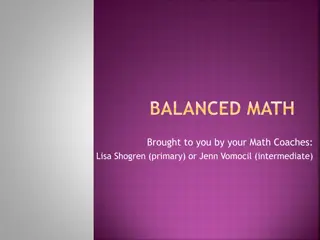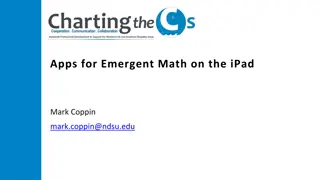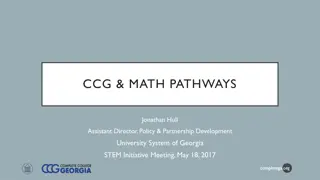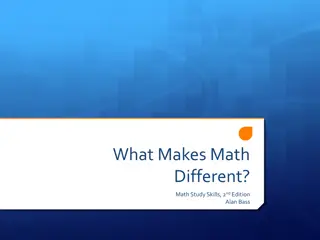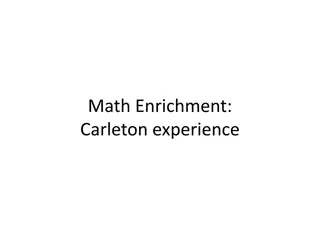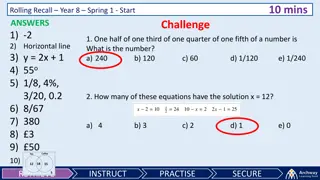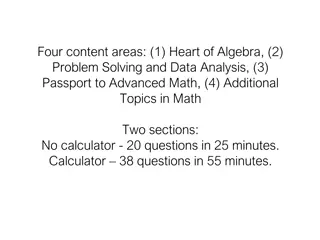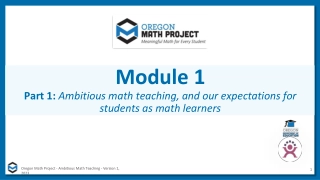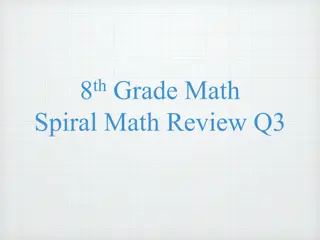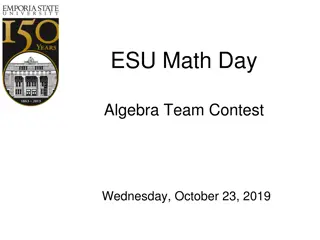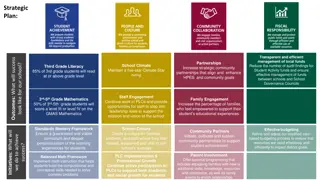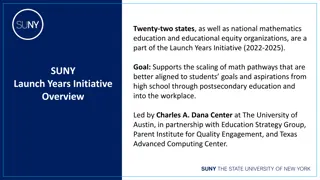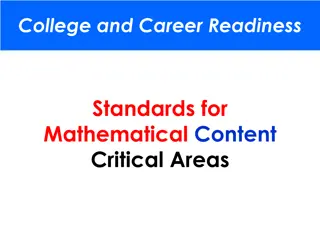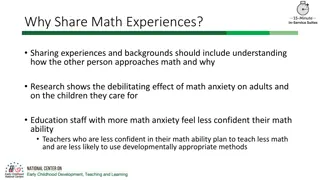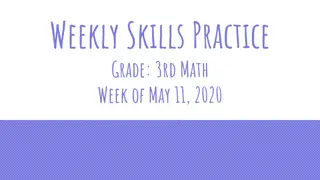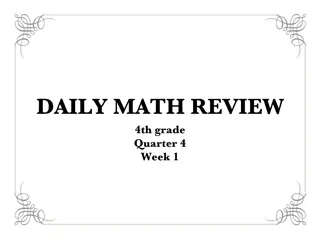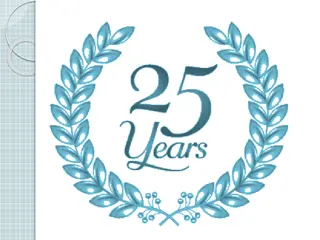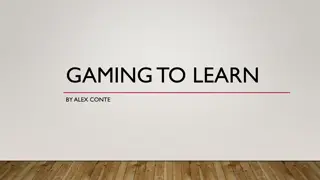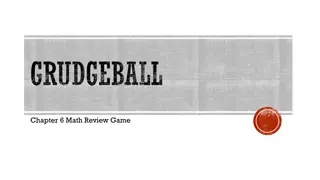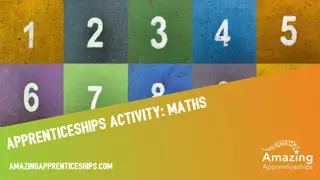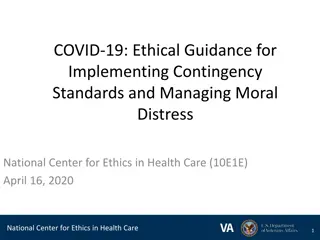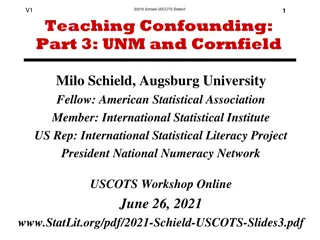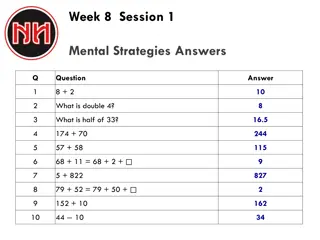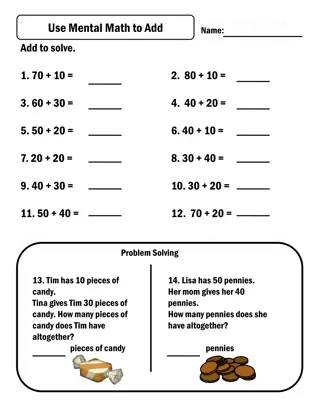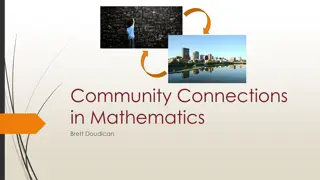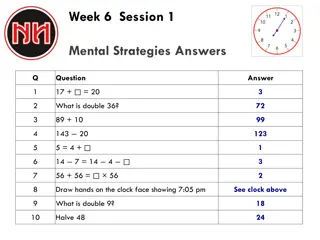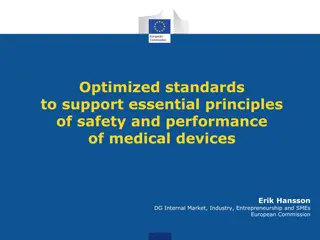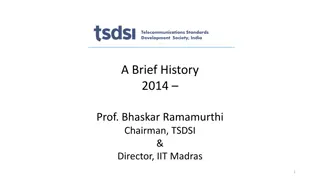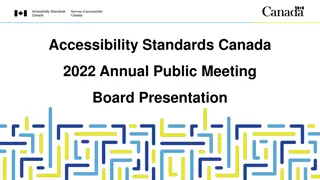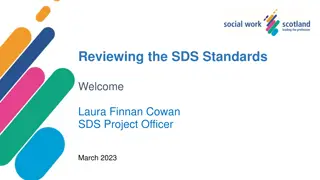Challenges and Strategies in Implementing Nebraska's 2022 Math Standards
The implementation of Nebraska's 2022 College and Career Ready Standards for Mathematics poses challenges in prioritizing key actions, aligning resources, and fostering collaboration among teachers. The scenario highlights the need for efficient sequencing, strategic resource allocation, and sustained teacher support to enhance instructional quality and student achievement.
Download Presentation

Please find below an Image/Link to download the presentation.
The content on the website is provided AS IS for your information and personal use only. It may not be sold, licensed, or shared on other websites without obtaining consent from the author. Download presentation by click this link. If you encounter any issues during the download, it is possible that the publisher has removed the file from their server.
E N D
Presentation Transcript
Nebraskas 2022 College and Career Ready Standards for Mathematics
Standards Rollout Sequence Session 2: The Improved Standards and Key Shifts (Part 1) Session 3: The Improved Standards and Key Shifts (Part 2) Session 1: A Vision for Excellent Math Instruction Session 4: Preparing Teachers to Implement the Standards
1. Setting Implementation Priorities Session 4 Agenda 2. Applying Relevant Resources 3. Committing to Next Steps
1. Setting Implementation Priorities Session 4 Agenda 2. Applying Relevant Resources 3. Committing to Next Steps
Five categories of work: 1. Alignment and transition 2. Communication 3. Instructional materials 4. Professional learning 5. Assessment and accountability
Exploration phase: Building understanding of revised standards and instructional shifts Assessing readiness to implement
Which of these actions do you think will be most challenging in your work with the math standards? Why? Skim through the actions most relevant to your role in each category. Then share:
Prioritizing for Efficiency and Impact For example: Strong instructional materials must be in place before professional learning launches, because the effectiveness of professional learning depends on its alignment to teachers materials and the quality of those materials. What else? _______________________ before ________________________.
Scenario 1 Your district used Nebraska Instructional Materials Collaborative reports to select high-quality, standards- aligned materials three years ago. Implementation was difficult at first, but teachers and students rose to the challenge, and achievement is growing steadily. Teacher turnover is moderate, and most teachers know and implement the state s 2015 math standards well. Collaboration between teachers on curriculum and instruction is minimal, and vertical content teams in particular rarely have dedicated time to work together.
What approaches or entry points to standards exploration do you suggest? What aspects of standards exploration do you suggest not prioritizing?
Scenario 2 Your district s instructional materials are rated poorly for their lack of attention to conceptual understanding, authentic application, and the math processes. They provide ample practice for procedural skills and fluency, however, and the district s students consistently score above the state s average on summative assessments. Your teaching force is highly mobile, and many teachers are novices. Most are very eager to learn about and implement the improved math standards, and few are familiar with the 2015 standards.
What approaches or entry points to standards exploration do you suggest? What aspects of standards exploration do you suggest not prioritizing?
Scenario 3 Your elementary school is a close-knit community with highly experienced teachers committed to individualized instruction for every student. Collaboration time focuses on analyzing assessment data in order to identify which skills each student needs to practice, and teachers create or source the instructional materials they need to provide the appropriate practice opportunities. Families have expressed concern about the amount of time many students spend in intervention settings without making substantial progress toward proficiency.
What approaches or entry points to standards exploration do you suggest? What aspects of standards exploration do you suggest not prioritizing?
What will you prioritize when it comes to implementing the improved math standards? What will you not prioritize? Why? Now think about your own context: the system, resources, teachers, students, and community.
1. Setting Implementation Priorities Session 4 Agenda 2. Applying Relevant Resources 3. Committing to Next Steps
How would you describe the relationship of NeMTSS to standards implementation in your context? Why?
Remember the Instructional Core? Standards anchor Tier 1 curriculum, instruction, and assessment. Tier 1 is the foundation of an effective tiered system of support. Student Task Teacher Content
Resources for Building Core Strength Need to choose new materials, or not sure of your materials quality? Need help planning your materials selection or implementation process? Need to find a professional learning provider with expertise in your materials?
Resources for Understanding the Standards The NDE has made detailed information about the standards and their revision process available on their website at www.education.ne.gov/math/mathematics-standards-revision Resources include: Key Features and Talking Points with an overview of the standards structure and content and a chart summarizing the main differences between the 2015 and 2022 standards Crosswalk showing details of changes made to standards Revision Process Overview with details about timeline, representation on the writing committee, and much more Implementation Overview clarifying the four stages of implementation and implications for summative assessment
1. Setting Implementation Priorities Session 4 Agenda 2. Applying Relevant Resources 3. Committing to Next Steps
Strategize and Plan What needs to happen in your system within three months? Six months? One year? How will you work to make these things happen? Who else will you need to involve and invest? Consider the sample plans in gray on your reflection guide. Then replace them with your own thoughts and plans. Feel free to use and adapt the examples, but do not feel constrained by them. They are meant to inspire, not prescribe!
Reflect and Share 1. What will you do within the week to support implementation of the improved standards? Why and how? 2. What will you do within the month? Why and how? 3. What will you do within the school year? Why and how? 4. What will you try not to do until next school year? Why? 5. What will your standards implementation efforts look like three years from now? Six years from now? 6. How will all this work affect students learning and lives?
Putting It All Together: A Vision for the Core College, career, and life readiness All students become flexible, confident users of mathematics in life and work by making sense of and solving problems, reasoning critically about mathematics, and representing, communicating, and connecting mathematical ideas with grade-level content, coherent learning progressions, and a rigorous balance of conceptual understanding, procedural skill and fluency, and authentic application. Mathematical processes Grade-level standards and instructional shifts
In a Strong Mathematics Core Standards are only one leg of the stool. Student Task Teacher Content
Thank you! Please complete the feedback form to help us plan further supports.



